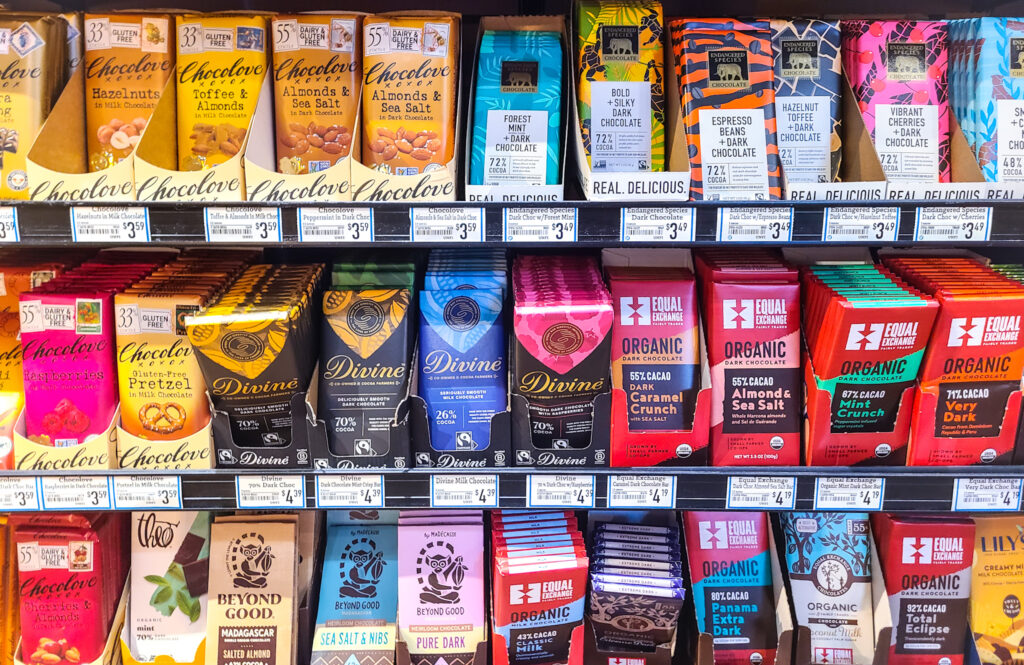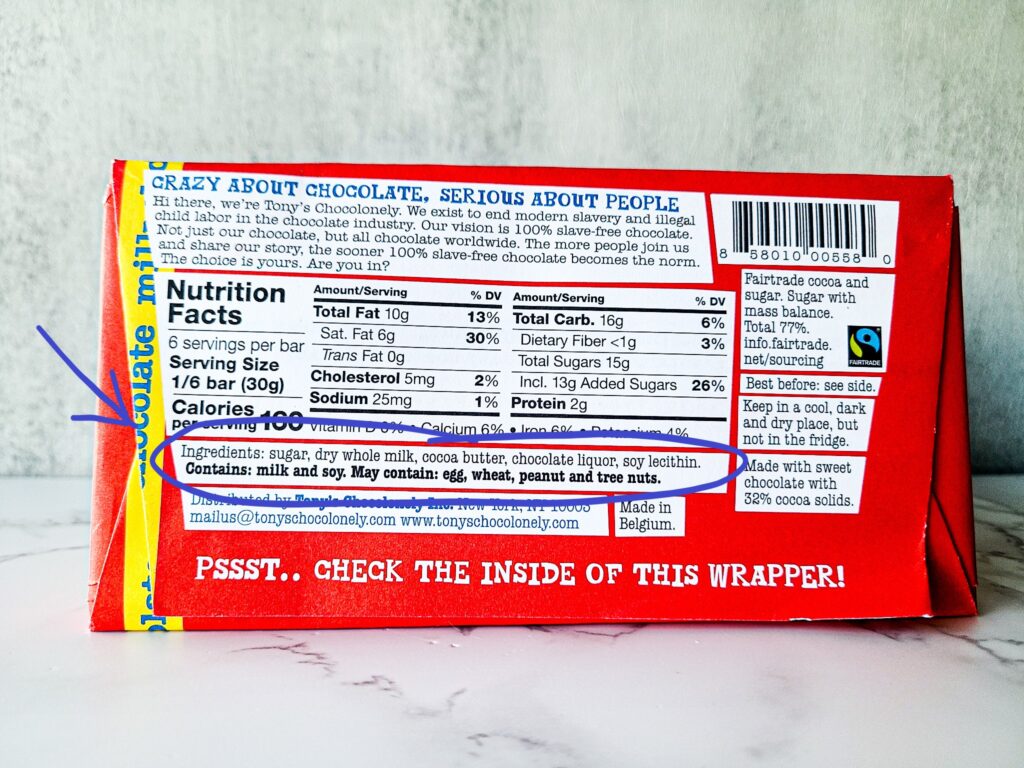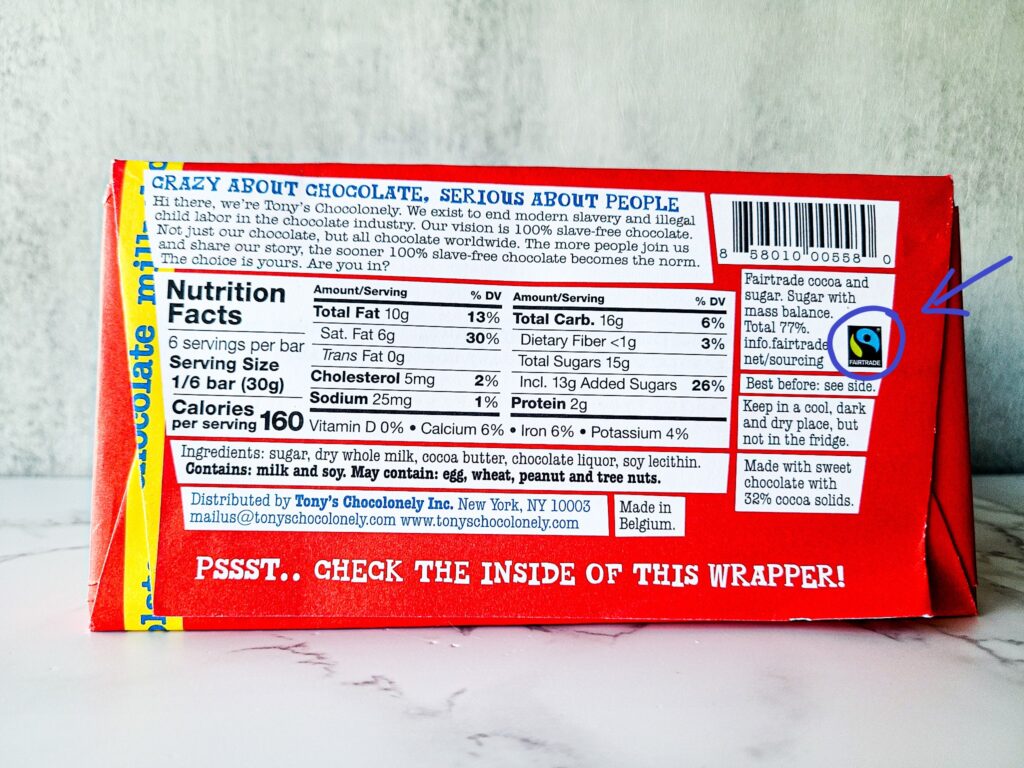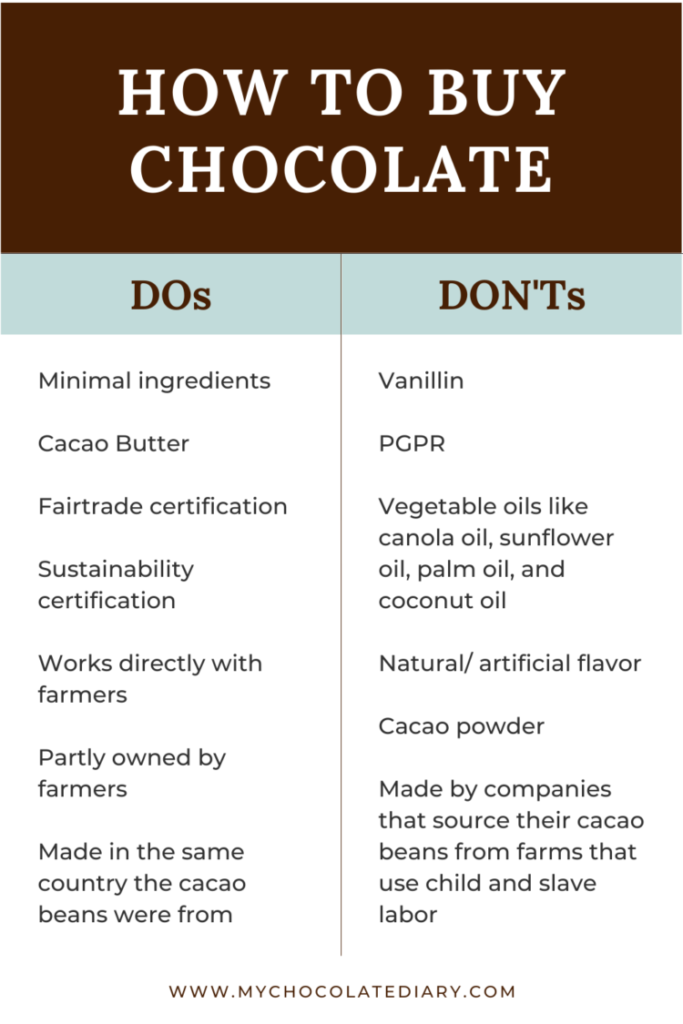What does the best chocolate mean to you? For me, the best chocolate doesn’t only have to be high-quality, smooth, and taste delicious but also made ethically and sustainably. In this blog article, I will teach you how to buy the best chocolate by answering these three questions.

1. What do I like?
Ultimately, the word ‘best’ is subjective and will differ from person to person. My best chocolate might not be your best chocolate. You can only tell what you really like if you’ve tasted plenty of chocolate and kept physical or mental notes on which ones you like or dislike.
What level of sweetness do you like? The cacao percentage is a good indicator of sweetness. Although it is not always that simple, I’ve had 58% dark milk chocolate which was much sweeter than 50% dark milk chocolate. The sweetness level is also affected by the origin of the cacao beans and the way the beans were roasted. What notes do you enjoy in chocolate? What inclusions do you enjoy? Personally, I enjoy milk or dark milk chocolate with caramel and hazelnut notes and no inclusions.

2. What ingredients were used to make this chocolate bar?
Arguably, the most important thing about buying chocolate is to read the ingredients. Look at the ingredients list located at the back of the packaging. The best chocolates usually have very minimal ingredients. This is because high-quality cacao beans can shine on their own and do not need a lot of sugar or artificial flavors to taste good.
Here are some examples:
| high-quality chocolate bar ingredients list | organic cacao, cane sugar, cacao butter, milk powder |
| low-quality chocolate bar ingredients list | sugar, cacao butter, palm oil, whole milk powder, cocoa liquor, soy lecithin (emulsifier), vanillin, PGPR, artificial flavors |
The ingredients are listed from the greatest quantity to the least quantity. Usually, sugar being the first ingredient in a bar of dark or dark milk chocolate is a red flag to me.
Other red flags include:
- Vegetable oils – A lot of mass-production companies replace a portion or all of cocoa butter with vegetable oils like soybean oil, sunflower oil, or palm oil because it is an easy way to reduce the cost of raw ingredients. However, this also reduces the quality of the chocolate by changing the flavor and consistency of the chocolate.
- PGPR – Polyglycerol polyricinoleate (PGPR) is a chemical often used to reduce the viscosity of chocolate. Replacing cocoa butter with PGPR is another method a lot of companies use to cut costs. Real chocolate must contain both cacao liquor or cacao mass and cacao butter.
- Vanillin – Vanillin isn’t the same as vanilla. They do not necessarily come from vanilla beans. A lot of companies use synthetic vanillin, a by-product of the pulp and paper industry. Synthetic vanillin often has a bitter and unpleasant aftertaste.
- Natural/ artificial flavor – Natural flavors refer to chemicals extracted from natural resources like plants or animals. Artificial flavors refer to chemicals synthesized in a lab. Either way, I think both don’t belong in chocolate.
Often you can also find vanilla or soy lecithin in chocolate ingredient lists. While these are not necessarily red flags, I usually enjoy chocolate that does not have them more. In my opinion, chocolate with well-roasted cacao beans shouldn’t need vanilla to mask or dull down its flavor.

3. Is this chocolate ethical?
If ethics is something you value, then it is important to make sure that the chocolate bar you are buying was not made with cacao beans grown by child and slave labor. Most mass-produced chocolates from brands like Hershey, Nestle, and Mars are sourced from farms that are rampant with child labor and slavery. It is important to support small businesses that ensure the cacao beans used in their chocolate-making process are ethically sourced.
There are a handful of organizations that give certifications to these businesses to help us identify them. Fairtrade Certified, Fairtrade America, and Fairtrade International are third-party ensure that the certified companies have socially responsible and just practices. Certification by The Rainforest Alliance indicates that the chocolate was made from sustainably-grown cacao beans. The most important thing about the certifications is that they are from legitimate third-party organizations and not an organization affiliated with the business. You can usually find these certifications at the back of the chocolate bars.
Other than the certifications, a better indicator of ethical cacao beans sourcing is when the chocolate makers work directly with the cacao farmers, own some of the cacao farms or when the farmers own part of the company as in the case of Divine Chocolate. Another strong indicator of ethical chocolate is when the chocolate bars are produced in the same country as it was farmed.

Conclusion
These are the three questions I ask myself whenever I am buying chocolate. I hope that now you know more about how to buy the best chocolate. If this article was helpful to you, please consider subscribing to my free newsletter. What else do you do to ensure that you are buying the best chocolate? What else would you like to learn about chocolate? I would love to hear from you!
